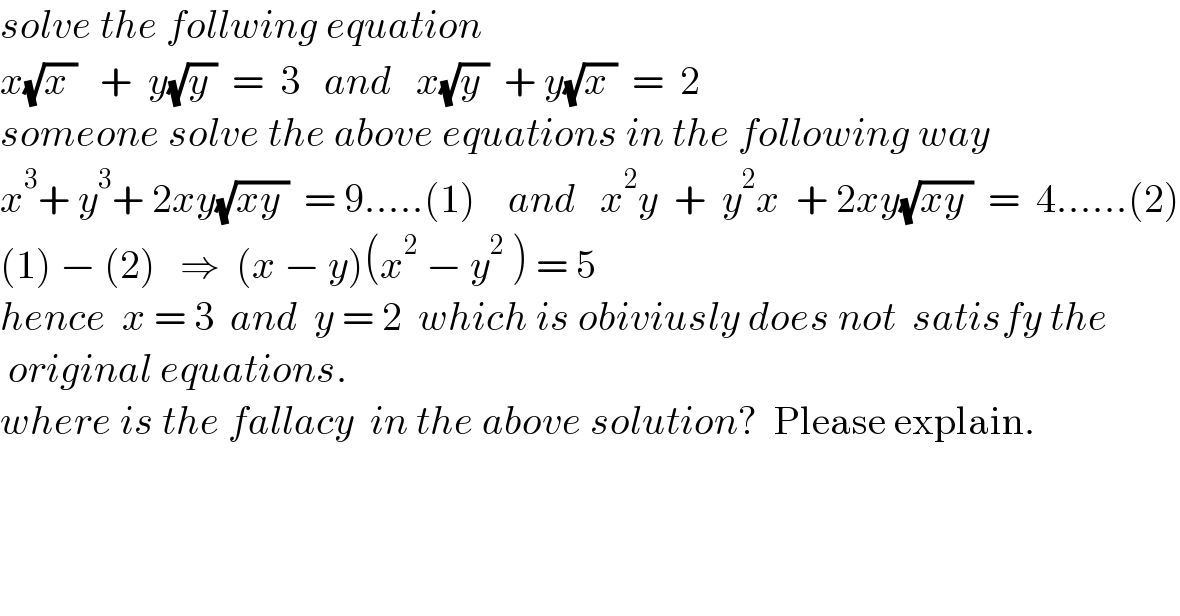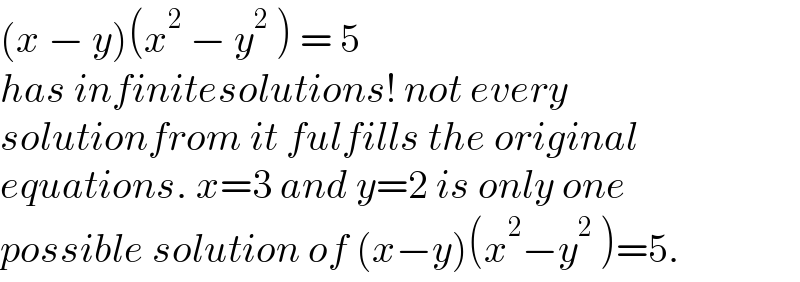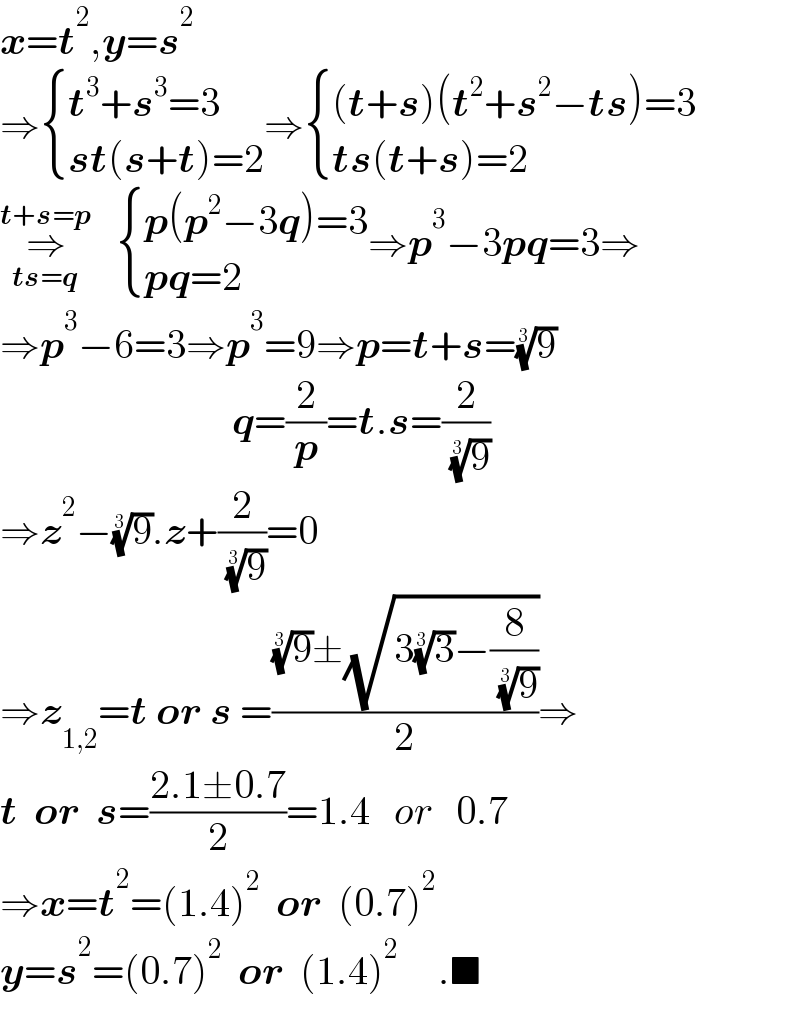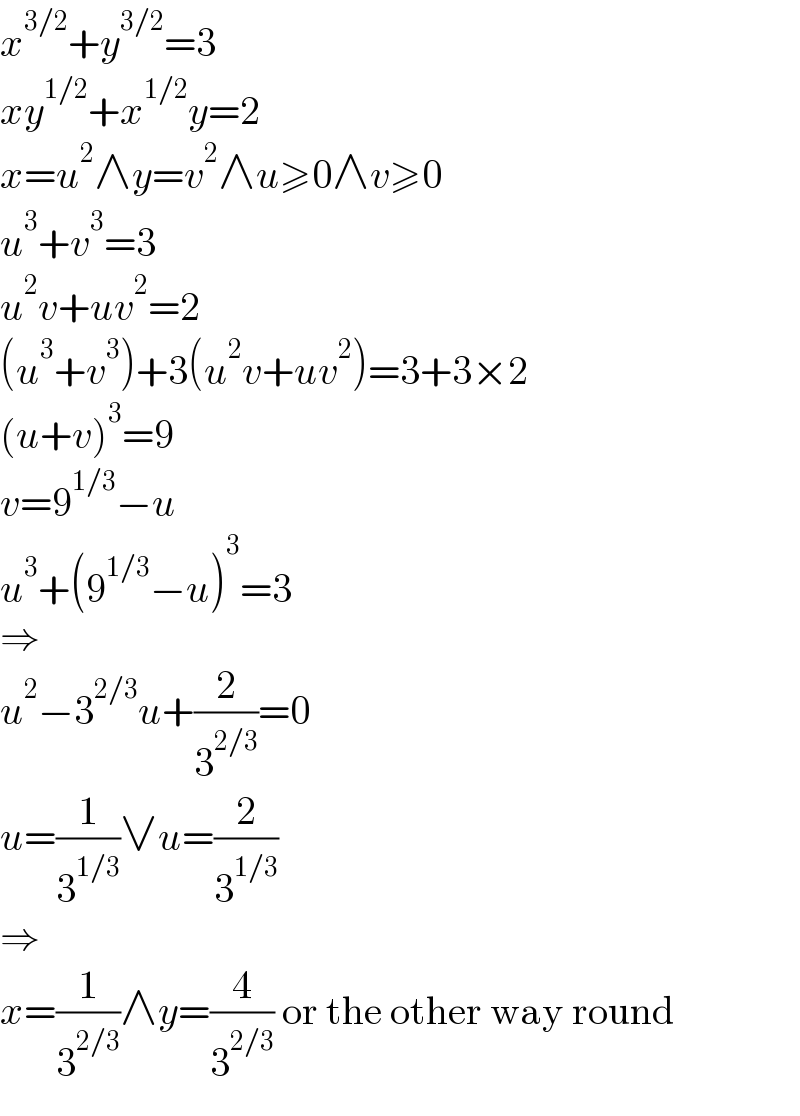
Question and Answers Forum
Previous in Relation and Functions Next in Relation and Functions
Question Number 175801 by Lekhraj last updated on 07/Sep/22

Commented by mr W last updated on 07/Sep/22

Commented by Frix last updated on 07/Sep/22

Commented by Lekhraj last updated on 08/Sep/22

Commented by Lekhraj last updated on 08/Sep/22

Commented by Frix last updated on 16/Sep/22

Answered by behi834171 last updated on 07/Sep/22

Answered by Frix last updated on 07/Sep/22

Commented by Lekhraj last updated on 08/Sep/22

Commented by Lekhraj last updated on 08/Sep/22

Commented by Lekhraj last updated on 08/Sep/22

